Lucy Williamson
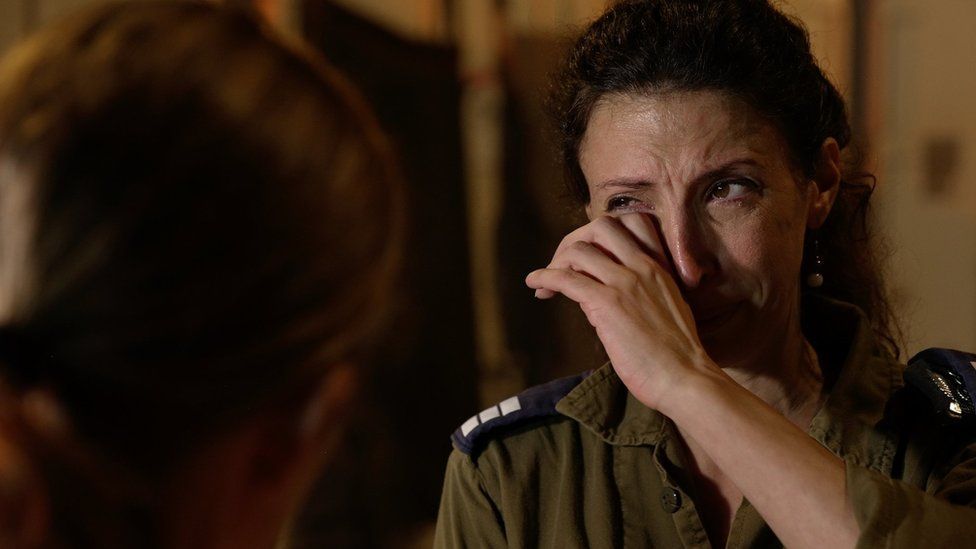
The BBC has seen and heard evidence of rape, sexual violence and mutilation of women during the 7 October Hamas attacks.
Several people involved in collecting and identifying the bodies of those killed in the attack told us they had seen multiple signs of sexual assault, including broken pelvises, bruises, cuts and tears, and that the victims ranged from children and teenagers to pensioners.
Video testimony of an eyewitness at the Nova music festival, shown to journalists by Israeli police, detailed the gang rape, mutilation and execution of one victim.
Videos of naked and bloodied women filmed by Hamas on the day of the attack, and photographs of bodies taken at the sites afterwards, suggest that women were sexually targeted by their attackers.
Few victims are thought to have survived to tell their own stories.
Their last moments are being pieced together from survivors, body-collectors, morgue staff and footage from the attack sites.
Police have privately shown journalists a single horrific testimony that they filmed of a woman who was at the Nova festival site during the attack.
She describes seeing Hamas fighters gang rape a woman and mutilate her, before the last of her attackers shot her in the head as he continued to rape her.
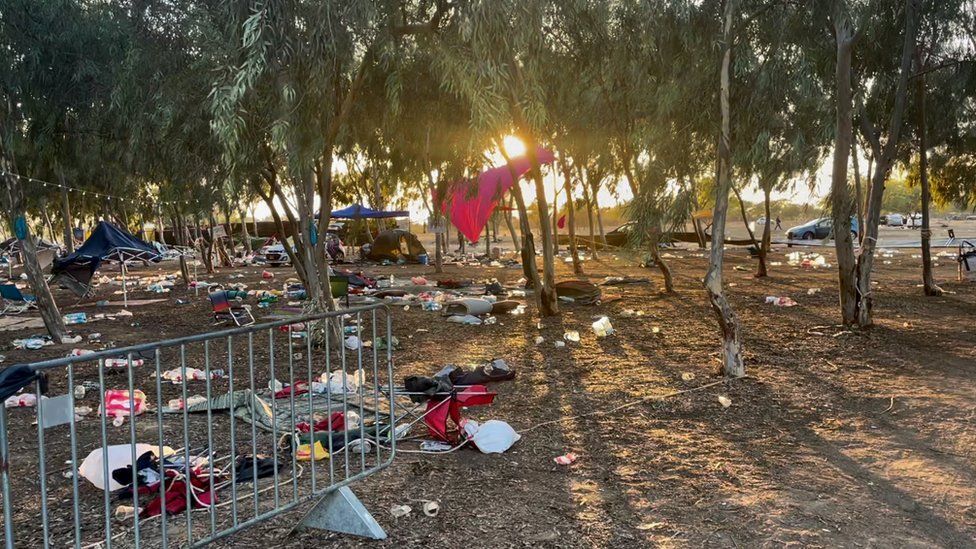 IMAGE SOURCE,BBC/NIK MILLARDImage caption,
IMAGE SOURCE,BBC/NIK MILLARDImage caption,Hamas fighters stormed the Nova festival on 7 October and killed hundreds
In the video, the woman known as Witness S mimes the attackers picking up and passing the victim from one to another.
"She was alive," the witness says. "She was bleeding from her back."
She goes on to detail how the men cut off parts of the victim's body during the assault.
"They sliced her breast and threw it on the street," she says. "They were playing with it."
The victim was passed to another man in uniform, she continues.
"He penetrated her, and shot her in the head before he finished. He didn't even pick up his pants; he shoots and ejaculates."
One man we spoke to from the festival site said he heard the "noises and screams of people being murdered, raped, decapitated".
To our question about how he could be sure - without seeing it - that the screams he heard indicated sexual assault rather than other kinds of violence, he said he believed while listening at the time that it could only have been rape.
A statement he made through a support organisation describes it as "inhuman".
"Some women were raped before they were dead, some raped while injured, and some were already dead when the terrorists raped their lifeless bodies," his statement says. "I desperately wanted to help, but there was nothing I could do."
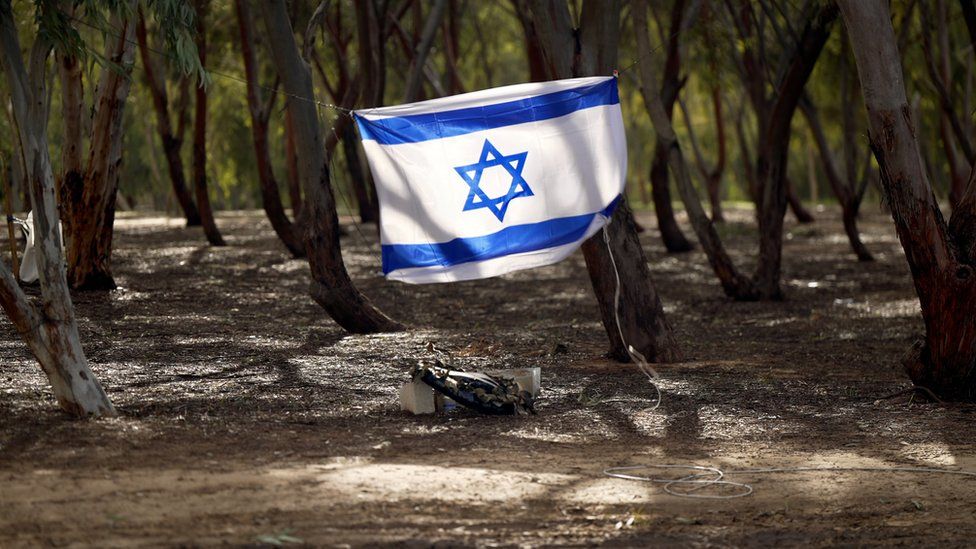 IMAGE SOURCE,BBC/DAVE BULLImage caption,
IMAGE SOURCE,BBC/DAVE BULLImage caption,Israelis are still grappling with the Hamas attack in October
Police say they have "multiple" eye-witness accounts of sexual assault, but wouldn't give any more clarification on how many. When we spoke to them, they hadn't yet interviewed any surviving victims.
Hamas has rejected Israel's accusation that its men sexually assaulted women during the attacks.
Israel's Women's Empowerment Minister, May Golan, told the BBC that a few victims of rape or sexual assault had survived the attacks, and that they were all currently receiving psychiatric treatment.
"But very, very few. The majority were brutally murdered," she said. "They aren't able to talk - not with me, and not to anyone from the government [or] from the media."
Videos filmed by Hamas include footage of one woman, handcuffed and taken hostage with cuts to her arms and a large patch of blood staining the seat of her trousers.
In others, women carried away by the fighters appear to be naked or semi-clothed.
Multiple photographs from the sites after the attack show the bodies of women naked from the waist down, or with their underwear ripped to one side, legs splayed, with signs of trauma to their genitals and legs.
"It really feels like Hamas learned how to weaponise women's bodies from ISIS [the Islamic State group] in Iraq, from cases in Bosnia," said Dr Cochav Elkayam-Levy, a legal expert at the Davis Institute of International Relations at Hebrew University.
"It brings me chills just to know the details that they knew about what to do to women: cut their organs, mutilate their genitals, rape. It's horrifying to know this."
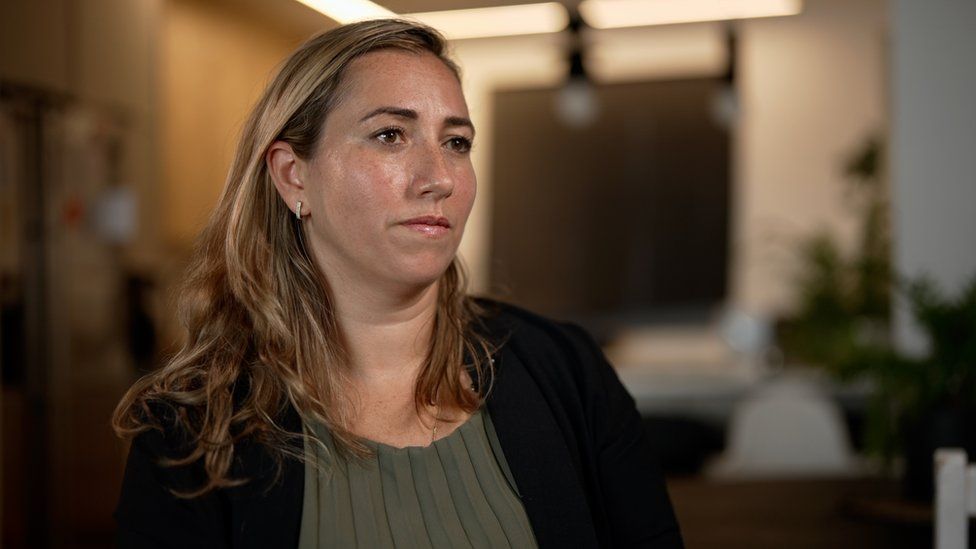 IMAGE SOURCE,BBC/DAVE BULLImage caption,
IMAGE SOURCE,BBC/DAVE BULLImage caption,"It really feels like Hamas learned how to weaponise women's bodies from ISIS in Iraq, from cases in Bosnia," said Cochav Elkayam-Levy
"I spoke with at least three girls who are now hospitalised for a very hard psychiatric situation because of the rapes they watched," Minister May Golan told me. "They pretended to be dead and they watched it, and heard everything. And they can't deal with it."
Israel's police chief Yaacov Shabtai said that many survivors of the attacks were finding it difficult to talk and that he thought some of them would never testify about what they saw or experienced.
"Eighteen young men and women have been hospitalised in mental health hospitals because they could no longer function," he said.
Others are reportedly suicidal. One of those working with the teams around survivors told the BBC that some had already killed themselves.
Much of the evidence has come from the volunteer body-collectors deployed after the attacks, and those who handled the bodies once they arrived at the Shura army base for identification.
One of the body-collectors volunteering with the religious organisation Zaka described to me signs of torture and mutilation which included, he said, a pregnant woman whose womb had been ripped open before she was killed, and her foetus stabbed while it was inside her.
The BBC has not been able to independently verify this account, and Israeli media reports have questioned some testimony from volunteers working in the traumatic aftermath of the Hamas attacks.
Another, Nachman Dyksztejna, provided written testimony of seeing the bodies of two women in kibbutz Be'eri with their hands and legs tied to a bed.
"One was sexually terrorised with a knife stuck in her vagina and all her internal organs removed," his statement says.
At the festival site, he says small shelters were "filled with piles of women. Their clothing was torn on the upper part, but their bottoms were completely naked. Piles and piles of women. […] When you took a closer look at their heads, you saw a single shot straight to the brain of each."
Hundreds of bodies were collected from the attack sites by volunteers.
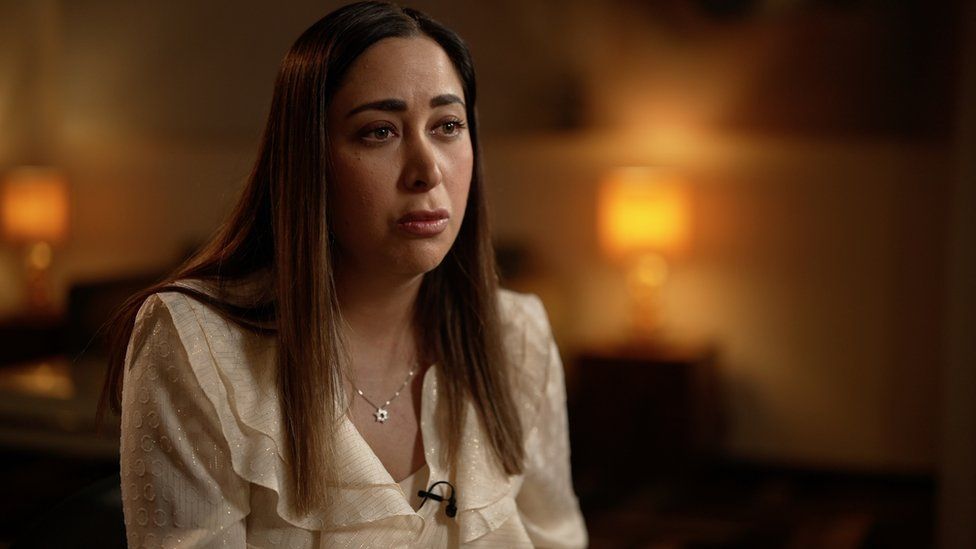 IMAGE SOURCE,BBC/DAVE BULLImage caption,
IMAGE SOURCE,BBC/DAVE BULLImage caption,May Golan: "For the first five days, we still had terrorists on the ground in Israel. And there were hundreds, hundreds of bodies everywhere."
Investigators admit that in those first chaotic days after the attacks, with some areas still active combat zones, opportunities to carefully document the crime scenes, or take forensic evidence, were limited or missed.
"For the first five days, we still had terrorists on the ground in Israel," May Golan said. "And there were hundreds, hundreds of bodies everywhere. They were burned, they were without organs, they were butchered completely."
"This was a mass casualty event," police spokesman Dean Elsdunne told journalists at a briefing.
"The first thing was to work on identifying the victims, not necessarily on crime scene investigation. People were waiting to hear what happened to their loved ones."
It was staff at the army's Shura base, where bodies arrived for identification, who have provided investigators with some of the most crucial evidence.
This evidence emerged from a makeshift hub of tents and refrigerated shipping containers set up at the base to identify the bodies.
When we visited, hospital trolleys, their iron skeletons topped with khaki stretchers, stood neatly lined up in front of the containers that housed the dead; the white plastic overalls of those on shift translucent under the floodlights.
Fighter jets roared overhead, drowning out the cicadas, as Israel's bombardment of Gaza continued.
Teams here told us they'd seen clear evidence of rape and sexual violence on the bodies coming in, including broken pelvises from sustained violent abuse.
"We see women of all ages," one of the reservists on the forensic team, Captain Maayan, told the BBC. "We see rape victims. We see women who have been through violation. We have pathologists and we see the bruises, we learn about the cuts and tears, and we know they have been sexually abused."
I ask her what proportion of the bodies she's handled show signs of this.
"Abundant," she said. "Abundant amount of women and girls of all ages."
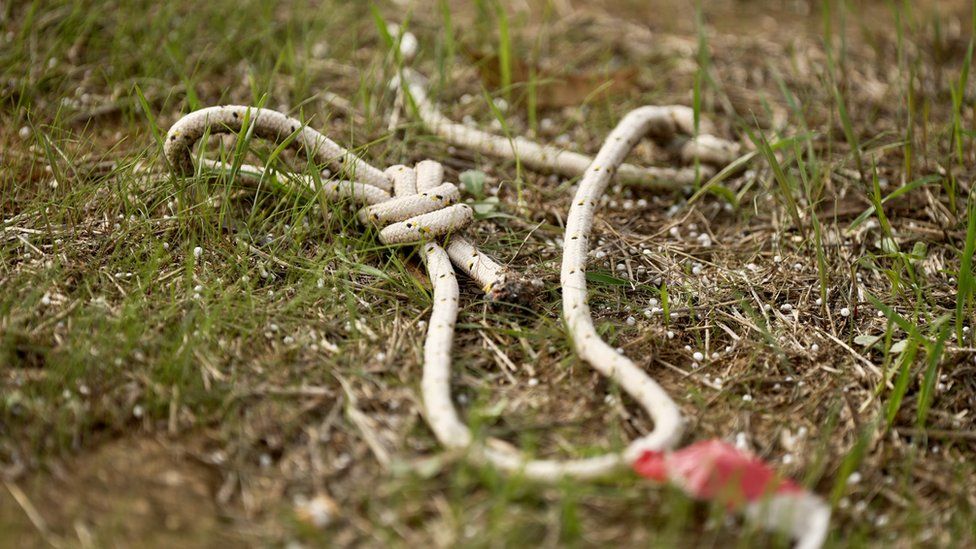 IMAGE SOURCE,BBC/DAVE BULLImage caption,
IMAGE SOURCE,BBC/DAVE BULLImage caption,Debris litters the ground at the Nova festival site
The number of victims is hard to define, partly because of the state of the bodies.
"It's definitely multiple," said another serving soldier who asked us to use only her first name, Avigayil. "It's hard to tell. I've dealt with more than a few burned bodies and I have no idea what they went through beforehand. And bodies that are missing the bottom half - I also don't know if they were raped. But women that were clearly raped? There are enough. More than enough."
"Sometimes we are left only with a very small part of the body," Dr Elkayam-Levy tells me. "Maybe it's a finger, a foot or a hand that they're trying to identify. People were burned to ashes. Nothing was left. […] I want to say that we'll never know how many cases there were."
Privately some of those working on this talk in terms of "dozens" of victims but quickly caution that evidence is still being gathered and pieced together.
The civil commission headed by Dr Elkayam-Levy, to collect testimony on sexual crimes, is calling for international recognition that what happened on 7 October was systematic abuse, constituting Crimes Against Humanity.
"We see definite patterns," she told me. "So it wasn't incidental, it wasn't random. They came with a clear order. It was […] rape as genocide."
Avigayil agrees there were similarities in the violence visited on the bodies that arrived at the Shura base.
"There are patterns in that groups of women from the same place were treated in a similar manner," she said.
"There might be a set of women who were raped in one way, and we're seeing similarities in the bodies; and then a different set that were not raped but shot multiple times in the exact same pattern. So it seems that different groups of terrorists had different forms of cruelty."
"This was a premeditative, systematic event," police chief Yaacov Shabtai told journalists.
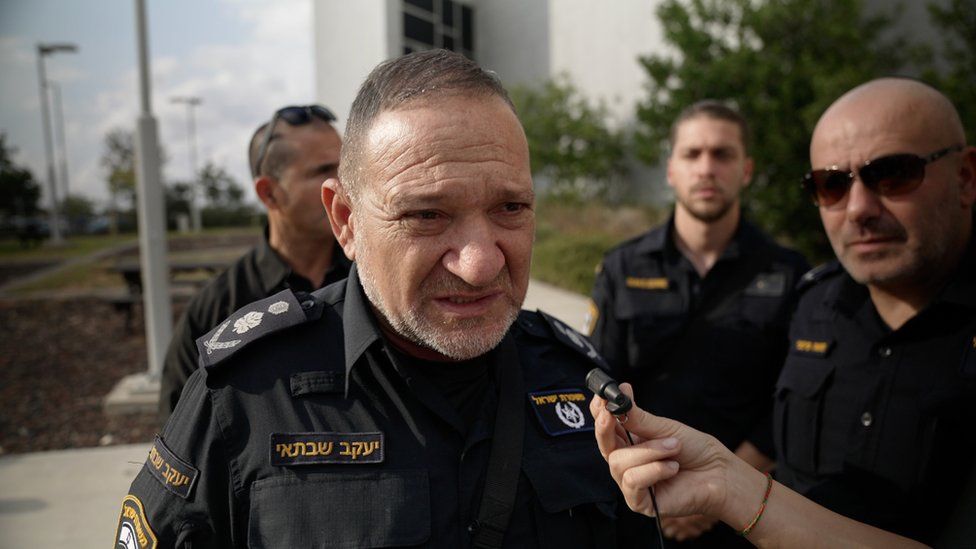 IMAGE SOURCE,BBC/DAVE BULLImage caption,
IMAGE SOURCE,BBC/DAVE BULLImage caption,"Israel on 7 October is not the same country that woke up the following morning": police chief Yaacov Shabtai
David Katz from Israel's cyber crime unit which is involved in the investigation, told journalists that it was too early to prove that sexual violence was planned as part of the attack, but that data extracted from the phones of the Hamas attackers suggested that "everything was systematic".
"It would be reckless to say we can already prove it […] but everything that was done there was done systematically," he said. "Nothing happened by coincidence. Rape was systematic."
Israel's government points to documents it says were found on Hamas fighters that appear to support the idea that sexual violence was planned. It's released clips of interrogations with some captured fighters in which they appear to say that women were targeted for this purpose.
Last week, UN Women put out a statement saying it "unequivocally condemn[ed] the brutal attacks by Hamas" and was "alarmed by the numerous accounts of gender-based atrocities and sexual violence during those attacks".
Dr Elkayam-Levy said before the statement that international women's rights organisations had taken far too long to respond to her call for support.
"This is the most documented atrocity humanity has known," she told me.
"Israel on 7 October is not the same country that woke up the following morning," said police chief Yaacov Shabtai.
Amid the horror of what happened to women here, Captain Maayan from the Shura identification unit says the hardest moments are when she sees "the mascara on their eyelashes, or the earrings they put on that morning".
I ask where that lands in her, as a woman.
"Terror," she replied. "It terrorises us."
Additional reporting by Scarlett Barter
No comments:
Post a Comment